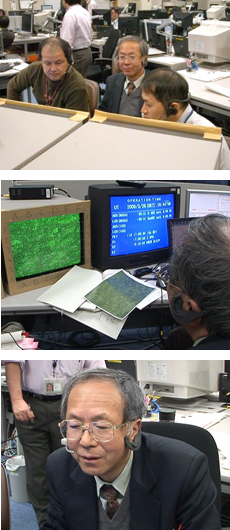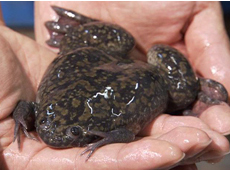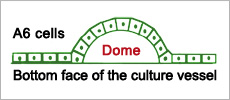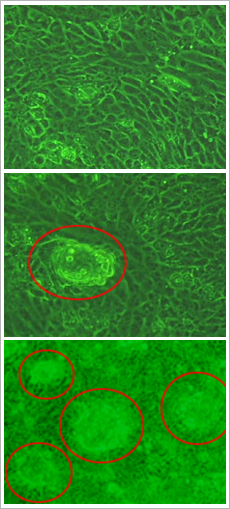Q. What are your thoughts after performing experiments in Kibo?

Dr. Asashima conducting microscopic observations on cells during a Dome Gene Experiment at Tsukuba Space Center.
There is a device called a clinostat that can simulate microgravity on the ground, and I have used to cultivate frog kidneys in many experiments. Some people say we don’t need to do this experiment in space because we have such devices on the ground, but the space experiment actually gave us different results than clinostat experiments on the ground. There were some similarities, of course, but still there are many things that we could not have understood if we hadn’t done this in space. That’s what we learned after our first space experiment. Even though we could use high-tech devices to perform these experiments on the ground, there are better systems and environments in space.
Also, we learned from this experiment that a frog’s kidney cells do not take on a dome shape in space. What is causing this? If the cell cytoskeleton isn’t functioning properly, then what’s needed to make it work? One question after another has appeared in my head, and I have more things to study. If we continue our research, we will gain new knowledge and wisdom about the nature and origins of life. The ISS is the common property of humanity, and so it is very important that we use this new knowledge wisely and responsibly. Q. How do you think we should use Kibo in the future? I’d like the ISS to be operated as long as possible, and I want more people using the Kibo module. Although, to make that happen, it is important to create an environment for easier participation. For example, in my case, it took me 15 years from the public offering to perform this experiment. During this period, there was a Space Shuttle accident and the construction of the ISS was delayed, but to be honest, it was difficult for me to wait to carry out space experiments. Of course, those 15 years were not wasted. Technology moved forward a great deal, and experimental methods and analysis improved a lot. But if the process were simplified and scientists would have to wait only three or four years, there might be a lot of interest form various fields in using Kibo. In addition, we need to think about broadening the range of utilization of Kibo, such as collaborations with other Asian countries. Q. Why do you think people are saying that specific results from experiments on the ISS are slow to emerge? The Kibo experiments have just started. It takes time to analyze data, to find out what that data means, and then to verify whether or not the data is correct. Everyone also thinks that samples are returned to us right as soon as the experiment is finished, but the Space Shuttle can only carry so much on its return from the ISS, so most of the time the return of the samples is delayed. The samples from the Dome Gene Experiment came back to me six months after the experiment was completed in March 2009. Until then, I couldn’t even start to analyze them.
Many things about the Dome Gene have only recently been understood, so I think a lot of interesting results will emerge from other experiments. We have already achieved great results from experiments on gravisensivity element analysis; and on the process through which radiation causes cancer, loss of bone mass, and, reduction of muscle mass; but soon we’ll be getting more and more results from the ISS experiments. Instead of demanding immediate results from experiments that have only just begun, we need to focus on how we can accumulate these results for the benefit of Japan.



